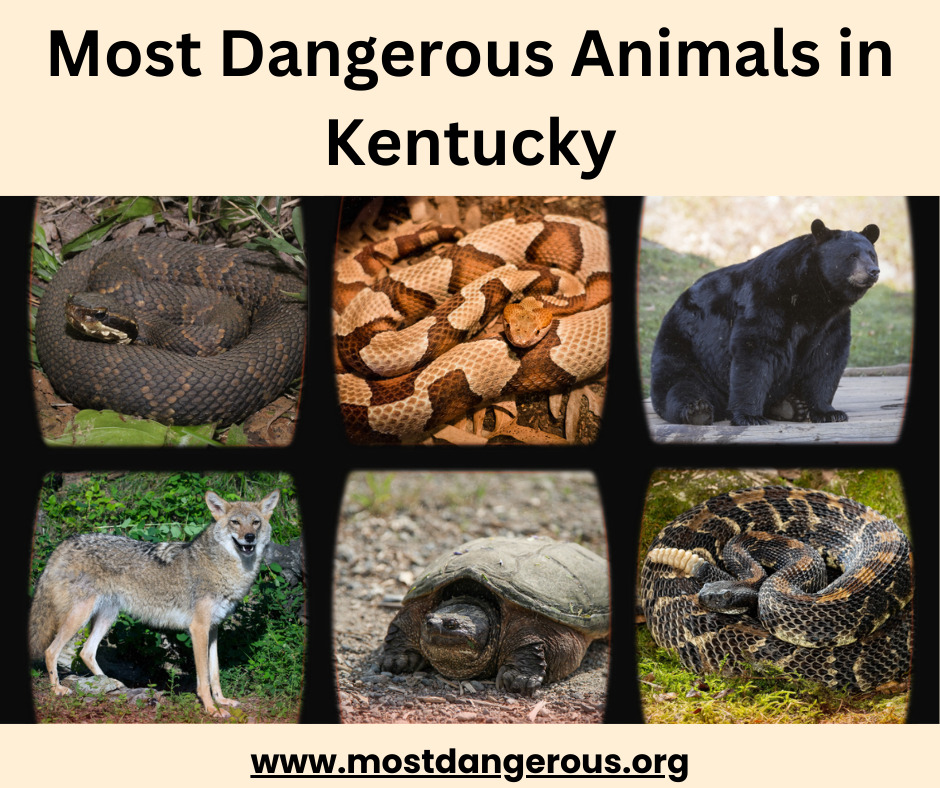Most Dangerous Animals in Kentucky.
Kentucky, known for its lush landscapes and abundant wildlife, is home to a variety of animals. While many of these creatures pose no threat to humans, there are a few that should be approached with caution.
Whether you’re hiking through the Appalachian Mountains or strolling along the banks of the Ohio River, it’s essential to be aware of the potential dangers that lurk in the wilderness.
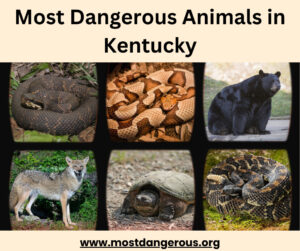
In this article, we will talk about the most dangerous animals in Kentucky, shedding light on the potential risks that outdoor enthusiasts may encounter while exploring the state’s diverse landscapes.
6 Most Dangerous Animals in Kentucky
Here’s a closer look at some of the most dangerous animals in Kentucky:
1. Eastern Timber Rattlesnake (Crotalus horridus)
Found throughout the state, the Eastern timber rattlesnake is one of Kentucky’s most feared reptiles.
Recognizable by its distinctive rattle, this venomous snake can deliver a potent bite if provoked.
While encounters with timber rattlesnakes are relatively rare, hikers and outdoor enthusiasts should exercise caution when exploring rocky, wooded areas where these snakes are known to reside.
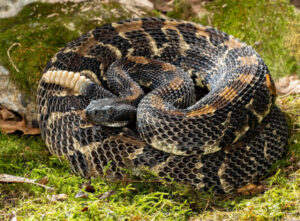
2. Copperhead (Agkistrodon contortrix)
Another venomous snake that calls Kentucky home is the copperhead.
With its copper-colored head and distinctive hourglass markings, this species is often encountered in forests, fields, and suburban areas.
While copperhead bites are rarely fatal to humans, they can cause significant pain, swelling, and tissue damage.
Steer clear of tall grass and brushy areas where copperheads may be hiding.
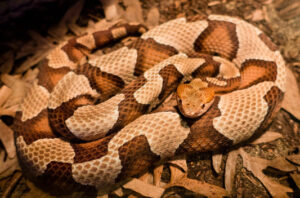
3. Black Bear (Ursus americanus)
Kentucky’s expanding black bear population has led to increased human-bear encounters in recent years.
While black bears are generally shy and non-aggressive, they can become dangerous if they feel threatened or cornered.
To avoid conflicts with bears, campers should practice proper food storage techniques and avoid leaving food scraps or garbage behind.
If you do encounter a black bear, remain calm, back away slowly, and do not run.
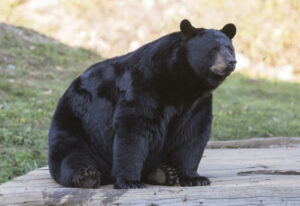
4. Coyote (Canis latrans)
Once confined to the western plains, coyotes have adapted to urban and suburban environments across Kentucky.
While they typically avoid confrontations with humans, coyotes may prey on small pets or scavenge for food in residential areas.
To deter coyotes from your property, secure trash bins, remove outdoor food sources, and supervise small pets when they’re outside.
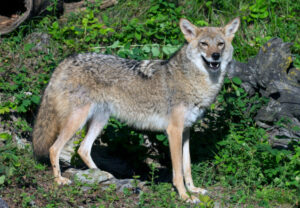
5. Eastern Cottonmouth (Agkistrodon piscivorus)
Also known as water moccasins, eastern cottonmouths are semi-aquatic snakes commonly found in the swamps, marshes, and waterways of Kentucky.
While they are not typically aggressive towards humans, cottonmouths will defend themselves if threatened.
When boating or fishing in areas where cottonmouths are present, be mindful of your surroundings and avoid reaching into murky water or dense vegetation.
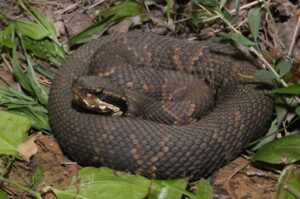
6. The Common Snapping Turtle (Chelydra serpentina)
The Common Snapping Turtle, found throughout Kentucky, is known for its powerful jaws and aggressive behavior when removed from water.
Weighing 10 to 35 lbs. and measuring 8 to 18.5 inches long, they have a distinctive appearance with a chunky head, long tail, and large webbed feet.
While their bites haven’t caused amputation in humans, they can lead to serious infections.
These reptiles prefer aquatic habitats rich in vegetation and prey such as insects, fish, frogs, and birds.
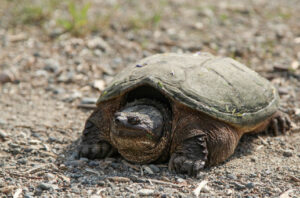
Conclusion
While encounters with dangerous animals in Kentucky are relatively rare, it’s essential to respect the wildlife and take precautions when exploring the great outdoors.
By staying alert, understanding potential risks, and practicing responsible behavior, you can safely enjoy all that the Bluegrass State has to offer.
ALSO READ:
- 5 Most Dangerous Social Media Challenges You Should Know About
- Most Poisonous Mushrooms: A Guide to the Most Poisonous Varieties
- Top 10 Most Dangerous Drugs in the World: Unveiling the Substances That Pose the Greatest Risks
- 10 Most Dangerous Birds in the World: Exploring the World’s Most Deadly Birds
